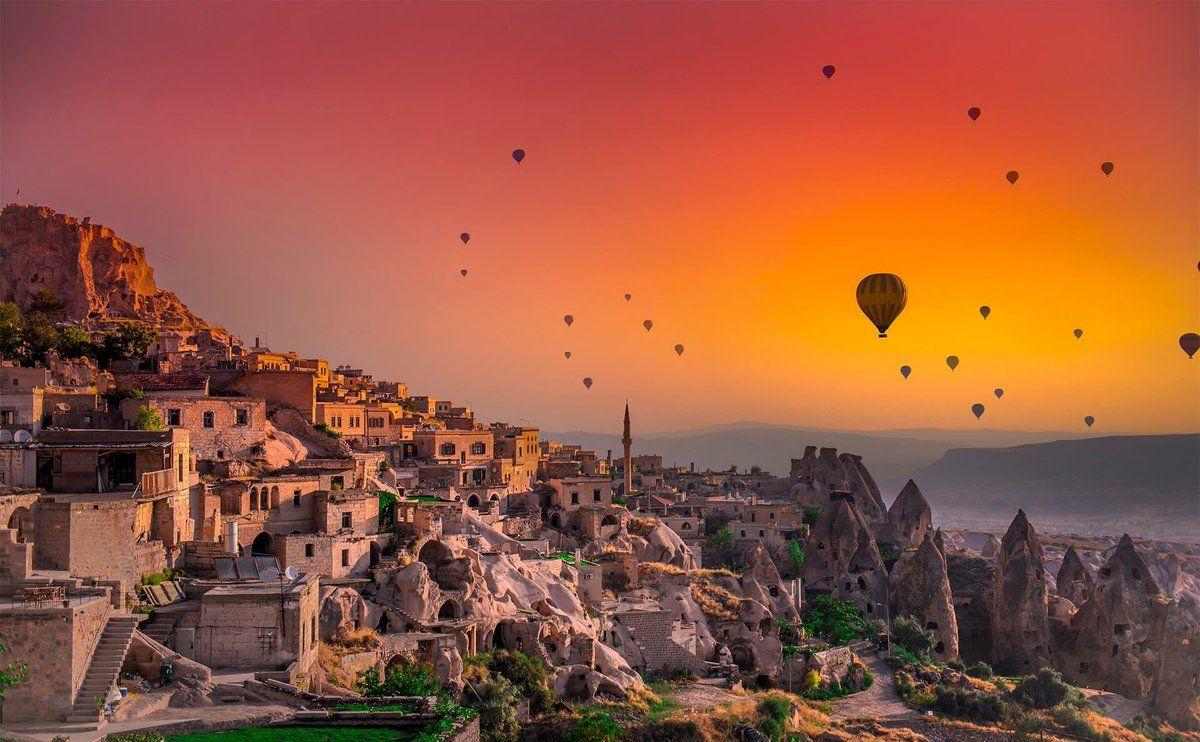In ancient geography, Cappadocia (Turkish: Kapadokya) was the name of the extensive inland district of Asia Minor (Asian part of modern Turkey). Cappadocia region is the place where nature and history come together most beautifully within the world. While geographic events are forming Peribacalari (fairy chimneys), during the historical period, humans had carried the signs of thousand years old civilizations with carving houses and churches within these earth pillars and decorating them with frisks.
Cappadocia contains several underground cities, largely used by early Christians as hiding places before they became a legitimate religion. The Cappadocian Fathers of the fourth century were integral to much of early Christian philosophy. It also produced, among other people, another Patriarch of Constantinople, John of Cappadocia who held office 517–520. For most of the Byzantine era it remained relatively undisturbed by the conflicts in the area, first with the Sassanid Empire and later against the Islamic expansion led by Arabs.
The area is a world famous and popular tourist destination, as it has many areas with unique geological, historic and cultural features. The region is southwest of the major city Kayseri, which has airline and railroad service to Ankara and Istanbul. The Cappadocia region is largely underlain by sedimentary rocks formed in lakes and streams, and ignimbrite deposits erupted from ancient volcanoes approximately 9 to 3 million years ago (late Miocene to Pliocene epochs). The rocks of Cappadocia near Goreme eroded into hundreds of spectacular pillars and minaret-like forms. The volcanic deposits are soft rocks that the people of the villages at the heart of the Cappadocia Region carved out to form houses, churches, monasteries. Goreme became a monastic center between 300-1200 AD. First period settlement in Goreme reaches to the Roman period from Christianity. Yusuf Koc, Ortahane, Durmus Kadir and Bezirhane churches in Goreme, houses and churches carved into rocks till to Uzun Dere, Baglidere and Zemi Valley carries the mystical side of history today. The Goreme Open Air Museum is the most visited site of the monastic communities in Cappadocia and is one of the most famous sites in central Turkey. It is a complex comprising more than 30 rock-carved churches and chapels containing some superb frescoes, dating from the 9th to the 11th centuries..

There are so many fascinating things to see in Cappadocia that you could spend a lifetime here and still discover new places. The main ‘must-see’ attractions are the two large open-air museums and the best of the underground cities. However, there are also many small, all-but-forgotten rock-cut churches and monasteries, splendid hiking trails, several spectacular caravanserais and many dramatic rock formations well worth going out of your way to visit.
* Goreme Open Air Museum: cave churches with frescoes
* Zelve Open Air Museum: an empty cave town with churches
* Ihlara Valley: the deepest gorge of Anatolia
* Kaymakli Underground City: the largest underground city
* Derinkuyu Underground City: the deepest underground city
* Uchisar Castle: Roman rock-cut castle
* Ortahisar: Roman rock-cut castle
* Avanos Town: center of pottery since the Hittites
* Pasabag: mushroom-shaped fairy chimneys, monks valley
* Devrent: animal-shaped fairy chimneys, imagination valley
* Gulsehir: first settlements in Cappadocia
* Forgotten Cave Churches: churches located in the valleys
* Caravanserais: 13th century accommodations along the silk road







